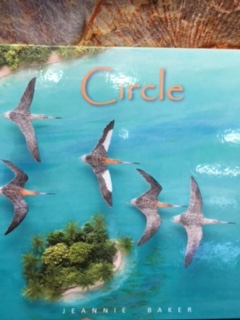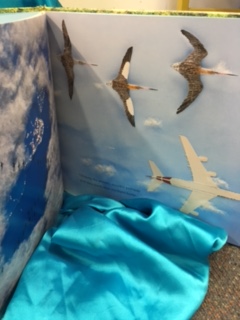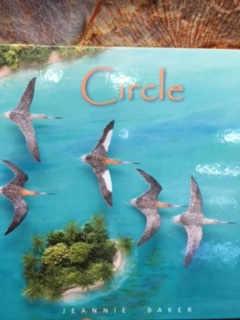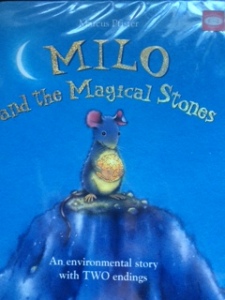Circle is another visually striking masterpiece created by Jeannie Baker.

As a young boy watches from the confines of his wheelchair, we learn about the annual migratory path of the Bar Tailed Godwit.
The Godwit takes part in a truly amazing journey, covering around 11,000 km in order to breed and feed.
Jeannie Baker’s images capture the landscape that the Godwit has to come across, highlighting the damage the humans are doing to not only the land by over developing but also to the many migratory animals who rely on different areas of the world to take part in their life cycle.
Circle teaches us about the Godwit’s journey through imaginative language and beautiful scenery. It allows the reader to take into account the difficult journey that these birds need to take every year in order to survive.
We also see the length of time through the eyes of the young boy as by the end he is out of his wheel chair – yet still dreaming of flying.
This is a beautiful book which can be read by all ages and understood in many different ways.

SO how can we use this book in the classroom?
Before you read
- What is a God wit?
- Where do they travel throughout the year?
As you read
- pinpoint the countries on an adjoining map that the Godwit visits so children have an idea of the distances between countries
- Look for other animals that can be seen, note them so you can find out more about their migratory paths.
After you read
SCIENCE
- Research a migratory animal which has been effected by human development. Find out how it has been effected and if the animal has made it’s own changes to the path or if it’s numbers have gone into decline. Compare and contrast the different animals.
- Life cycles: Map out the life cycle of the Godwit. Examine the different parts of their life cycle and predict what might happen if the wetlands disappear.
- How do scientists know where these birds migrate to?
- Can you create a better way to monitor the birds migration patterns?
- If the Godwit’s cannot land in China, what are the roll on effects for not only the Godwit but other animals or plants? Could it land elsewhere? Investigate the terrain and habitats needed by the Godwit.
- Would humans have a better understanding of the world if they still had a path of migration?
GEOGRAPHY
- Human over development: Where in your own community has over development taken place – ask this question before you provide any materials.
- Look at different case studies of over development and if any action is being taken place to rectify the issues.
- Look into why we have National Parks and world Heritage areas and how they have protected areas. Places to look at include: The Great Barrier Reef, Tasmanian forests, Galilee Basin, Murray-Darling River, Clarence FloodPlain, Collaroy Beach (storm of June 2016).
- Learn more about some great places to visit around Australia. Man made structures are abundant but so are the natural ones. How can we ensure that visitors to Australia visit both and why do we want to encourage the visiting of both man-made and natural? Check out these top 100 places!
- Do we need National Parks and World Heritage areas?
HISTORY
- Research great migrations of the past they may not happen any more.
- Do animals really need to follow the same path of migration?
- Do humans follow paths of migration?
MATHEMATICS
- Collect Data on the numbers of decline in chosen endangered animals.
- Collect data on the numbers of animals that are no longer endangered and compare to the endangered animals. How have different animals risen in numbers?
- Why are numbers, tables and data collection important to the survival of animals?
LITERACY
- How do images engage us? Use the images from Circle and from other Jeannie Baker books to look at how her artworks engages you in the story as compared to drawn images.
- Circular stories – This book follows a path, a journey. Can you find other stories which follow a circular pattern?
AT HOME
- Are there any animals that visit your house on a seasonal basis? Try to find out more about them. Keep a bird, animal or insect diary.
- Create your own collage like Jeannie Baker does. Collect local bits of nature to create a scene which represents being outside to your child.
Jeannie Baker’s books are always wonderful and this one tops that!


